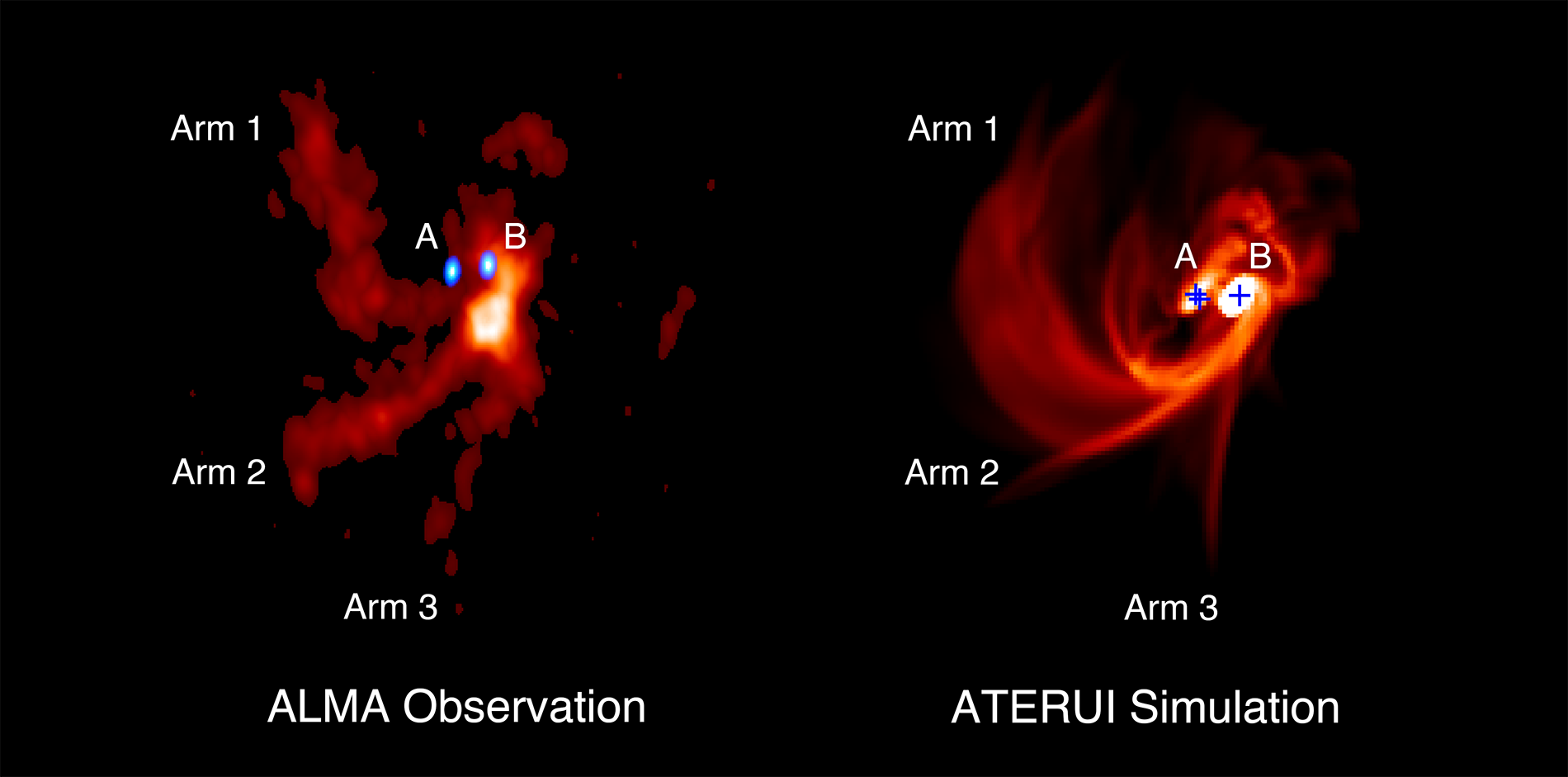
Artist’s impression of the triple protostars, IRAS 04239+2436. Credit: ALMA (ESO/NAOJ/NRAO)
Astronomers Reveal Feeding Frenzy in Stellar Nursery
Global research team discovers triple baby stars reaching out to feast
As we continue to explore the cosmos, an international research team, including UF astronomy professor Jaehan Bae, has made significant strides in understanding the formation of stars and the complexities of planet formation.
During the study, a significant discovery was made when the researchers observed three large spiral arms distributing to early-stage stars, or protostars, in the developing triple stellar system. The researchers confirmed that the spiral arms act as “streamers,” supplying materials to the young stars, which grow by absorbing gas. The findings, featured in The Astrophysical Journal, provide valuable insights into the origins of the streamers, which were previously unclear.
Although most stars in the galaxy form in multiples, unlike our Sun, understanding the formation of multiple stellar systems has proven a challenging task. “There are different theoretical models explaining the formation of multiple stellar systems, but exactly how stars form in multiples has not been fully understood,” said Bae.
The global team, led by Professor Jeong-Eun Lee from Seoul National University, used an array of radio telescopes called the Atacama Large Millimeter/submillimeter Array (ALMA) to study the forming system. As a theorist, Bae played a crucial role in interpreting the observed data, connecting it with theoretical models to infer possible formation mechanisms.
The team conducted computer simulations led by Tomoaki Matsumoto, a professor at Hosei University, to support the observed data. They found a remarkable agreement between the simulation and observations, according to Bae, indicating that the theoretical framework they proposed is likely operating as expected.
“The best way to test theoretical models is to observe multiples that are forming right now,” Bae said. Looking ahead, Bae’s team has submitted a proposal for a systematic observing program for forming stellar systems. The program aims to identify signs of dynamic interactions between forming stars and their environments.
“With this research, I am hoping that we can observe other forming multiple stellar systems to see if this one is an oddball or it’s a norm,” Bae said.

The researchers hope to determine whether their observations are an anomaly or if systems are commonly formed through similar processes, providing important constraints on our understanding of star formation. By successfully observing and modeling the early stages of multiple star formation, their work opens up new avenues for research in star and planet formation.
Read more about the study here.


